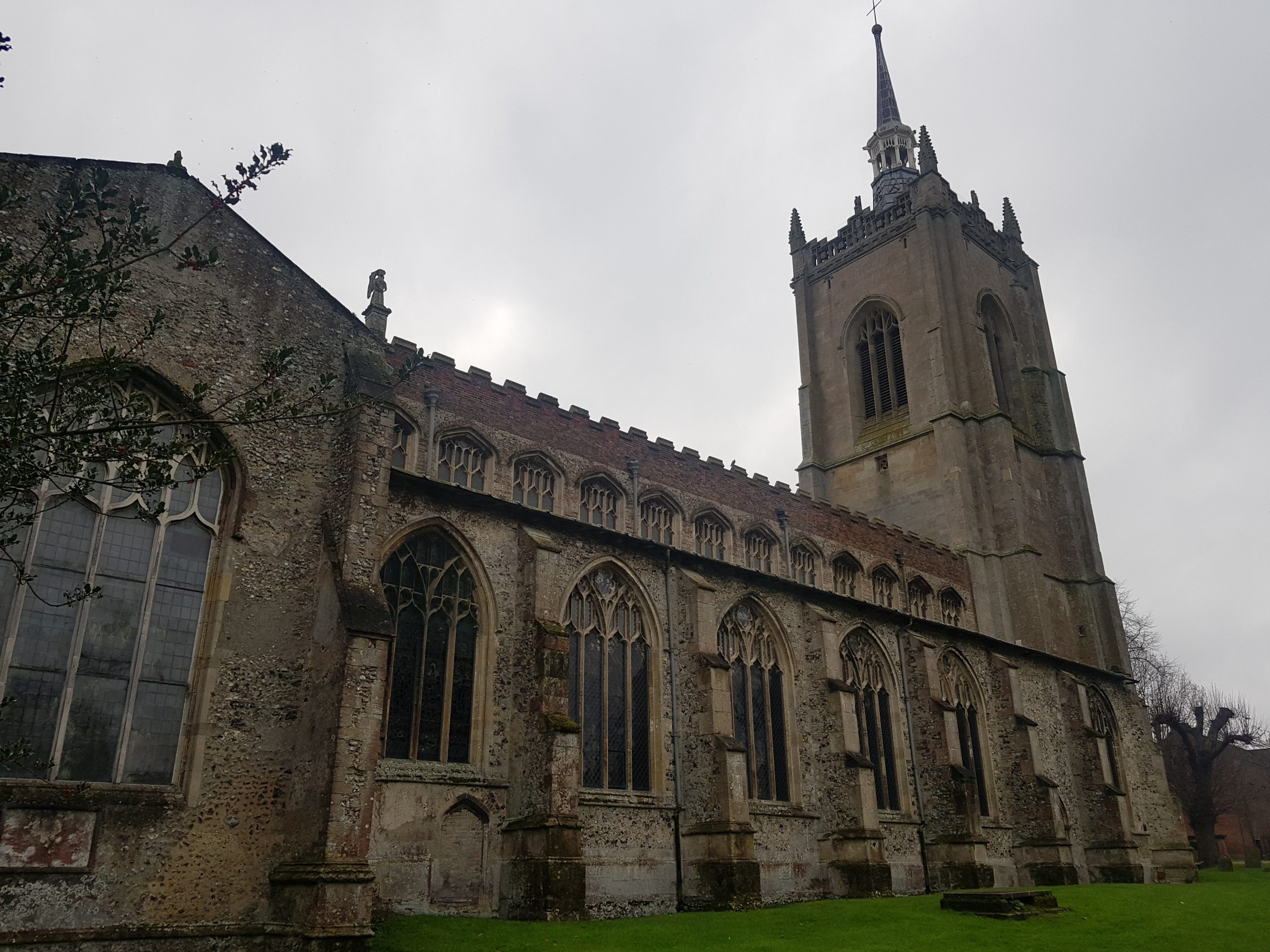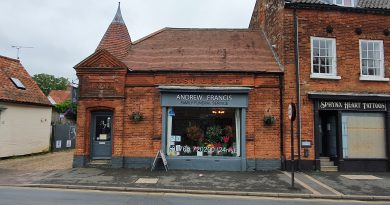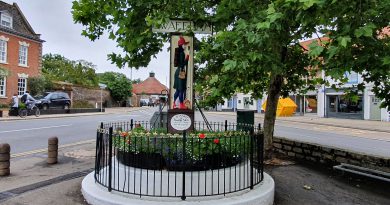Swaffham – St. Peter and St. Paul Church
The bulk of Swaffham’s main church was constructed between 1454 and 1490 and was built on the site of the previous church, of which nothing now remains.
The main entrance to the church is at the west door. The tower took longer to build, not being completed until 1510.
Looking towards the altar.
And looking back towards the west end.
The impressive hammer-beam roof, which dates to when the church was built.
The war memorial window, which was designed by William Morris & Co.
The pews in the main part of the nave date from the nineteenth century, having replaced the earlier box pews. These pew ends in the choir area are survivals from the earlier period, somewhere around the sixteenth century.
The Pedlar of Swaffham and his dog, which are from an old folkstory, the details of which I’ve pinched from Wikipedia:
“At last it happened that a shopkeeper there, hard by, having noted his fruitless standing, seeing that he neither sold any wares nor asked any almes, went to him and most earnestly begged to know what he wanted there, or what his business was; to which the pedlar honestly answered that he had dreamed that if he came to London and stood there upon the bridge he should hear good newse; at which the shop-keeper laught heartily, asking him if he was such a fool as to take a journey on such a silly errand, adding: “I’ll tell thee, country fellow, last night I dreamed that I was at Sopham, in Norfolk, a place utterly unknown to me, where methought behind a pedlar’s house in a certain orchard, and under a great oak tree, if I dug I should find a vast treasure! Now think you,” says he, “that I am such a fool to take such a long journey upon me upon the instigation of a silly dream? No, no, I’m wiser. Therefore, good fellow, learn wit from me, and get you home, and mind your business.”
The pedlar observing his words, what he had say’d he dream’d, and knowing they concentred in him, glad of such joyfull newse, went speedily home, and digged and found a prodigious great treasure, with which he grew exceeding rich; and Soffham (Church) being for the most part fallen down, he set on workmen and rectified it most sumptuously, at his own charges; and to this day there is his statue therein, but in stone, with his pack at his back and his dogg at his heels; and his memory is also preserved by the same form or picture in most of the old glass windows, taverns, and alehouses of that town unto this day.”
This brass was part of the memorial to Sir John Audley of Swaffham and it was moved to the wall to protect it from damage, although the brass dedicated to his wife had gone missing by 1781.
I hadn’t realised that there was a connection to Oliver Cromwell in Swaffham, but this is the memorial to Catherine Steward, his maternal grandmother. Steward was born at Castle Acre in 1545 and died in 1590. The Scotsman reported in 1911 that Queen Mary, Prince Albert and Princess Mary had come to visit the church, and spent some time looking at this memorial. Not that the Parliamentarian troops of Cromwell showed the church much mercy in the seventeenth century, they fired guns at the wooden angels in the roof, smashed windows and destroyed some statues.
On the subject of the local media, there was an announcement in the Bury and Norwich Post which has an interesting turn of phrase:
“The banns were published in Swaffham Church between Robert Savage and Mary Avey, but two days later the young woman was attacked with a cold and inflammation and on the following Saturday she was a corpse”.
I didn’t see anyone else whilst visiting the church and I can’t imagine it gets a lot of visitors at this time of the year, so it’s marvellous that they’ve kept it open during the day. The door is also an automatic one, which makes it more accessible than the arrangement (albeit a necessary one, as automatic doors don’t come cheap and often don’t exactly fit into the decor) in some churches.
All rather lovely.













